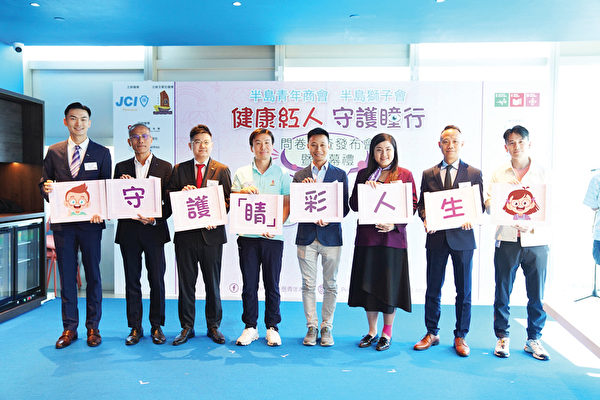Recent research has shown that the issue of myopia in children in Hong Kong is becoming increasingly severe, with inadequate eye care knowledge among adults leading to a high prevalence of myopia among children. Almost half of the surveyed households have at least one child with myopia. The organization responsible for the survey believes that current policies on eye care and myopia control are insufficient, and it recommends that authorities provide detailed free eye check-up services annually for children aged 6 to 10.
According to the “Guardian of Eyesight” program jointly organized by the Peninsula Youth Commerce and Peninsula Lions Club, a survey was conducted from March to April through subway station promotions and online questionnaires distributed via social media targeting 723 adults aged 18 and above in Hong Kong. A total of 582 valid questionnaires were collected to understand the public’s knowledge of eye care and myopia control.
The survey results revealed that in every two families with children, there is one child with myopia. Only thirty percent of parents regularly take their children for comprehensive eye examinations. Seven out of ten respondents have misconceptions about myopia control. In lower-income households, over sixty percent do not know how to properly care for their eyes.
The survey found that in nearly half of the households surveyed, at least one child has myopia. Children who use the computer for more than 3 hours a day see an average increase of 50 to 100 degrees in myopia each year. Concerningly, only one-third of families regularly have comprehensive eye exams for their children. Among parents surveyed, only one out of ten adhere to the “20-20-20” rule, where eyes should rest every 20 minutes by looking at an object 20 feet away for 20 seconds. The survey unit believes these results reflect the seriousness of myopia among children in Hong Kong.
Additionally, 74% of respondents have incorrect beliefs about myopia control methods, such as using blue light-blocking lenses or screen protectors, or watching green objects for two hours daily as aids in myopia control. Half of the respondents believe that consuming 15 to 20 blueberries or eating Omega-3 rich salmon daily can also help control myopia. However, the correct method should involve two hours of continuous outdoor activities daily to effectively control myopia, a practice followed by less than half of the surveyed individuals.
The survey results further showed that the myopia rate among children from low-income households is at 65.1%, which is significantly higher compared to 33.7% from higher-income families. Over 40% of low-income families live in subdivided flats, studios, or transitional housing. The research team believes that due to limited living space, low-income families find it harder to maintain optimal eye-to-screen distance, which negatively impacts children’s eye health.
As per existing policies, families receiving comprehensive social security assistance can receive up to $600 subsidy for one pair of glasses within 24 months. However, only 1.5% of individuals are aware of this support, with a mere 1% from low-income families utilizing the subsidy. Additionally, 70% of respondents feel that current support policies are inadequate in addressing childhood myopia.
The survey unit suggests that the government could consider providing financial assistance by issuing eyewear or medical vouchers for children from low-income families, enhancing public campaigns and education to promote not just eye care knowledge but also the importance of correct myopia control methods, increasing free eye examination opportunities, providing vision correction and myopia control lenses for children, and allocating more resources to reduce the myopia rate among low-income children.

